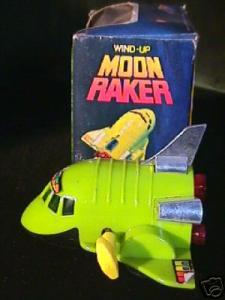Robot's from Argentina.
During the last few decades, toy robots have regained popularity because of
the new impulse given by collectible space items. The Buenos Aires Toy
Museum holds a spectacular collection of robots made or found in Argentina,
as well as a very interesting input of information on the subject. This huge
task of collecting and searching information is the result of a very hard
work carried on by our team of specialists.
It may seem simple to define a robot, most of us would describe the first of
those metallic invented creatures as one, though it's quite more complicated
to come up with a general definition for robots, since there are quite a lot
of variations and differences among them, which make much more complicated
to come up with a general definition.
The word Robot became popular in 1922 when the Czech writer Karel Capek used
it in his play R.U.R to refer to a bunch of animated creatures -created by
the leading man of the story- whose main task was to work. Etymologically
the word meant slave or servant in Czech, but it was redefined because of
this new meaning as a servant or salve that was specially created to work
instead of its creator.
As a general approach to the subject we can say that robots are machines or
devices that move independently, they might be defined as a combined and
mechanical system of computation and sensors that receive information
through various means in order to act on it through pre-established
technical or physical maneuvers.
Nowadays there are many types of robots that adjust to this general
definition. For example androids; these look alike humans, are what we
usually refer to as robots. However there are much more robots than we
acknowledge as such, take for example the mobiles, these machinery that has
the ability to move from one place to another independently of an immediate
indication from outside, are also robots in spite of the fact that they don'
t have any esthetical similarity to humans. The medical ones are specially
prosthesis control systems. And the industrial robots, very common in these
days, are machinery specially designed to carry on pre-established tasks
within the working places. In spite of all the esthetic and functional
differences, all these robots share a common origin and mechanism.
It's quite interesting to find scale reproductions of each and every one of
these robots with which millions of children play and that many adults
collect because of their cultural, historical and esthetic value.
Regarding robots history, it was very common to hear during the fifties that
by the next millenium there would be intelligent creatures created by man.
This hasn't happened, nonetheless the amount of scientific progress in this
field it's bringing much closer the possibility of that to happen.
As it happens in every other aspect of life, toys have reflected the boom of
robots.
At first the design of these toys showed hard angled lines using clockwork
mechanisms. Japanese wind-up tin robots from early 30s and 40s are the last
expression of that esthetic trend in robot design.
These toys were mostly made in tin, though it was during mid 50s and 60s
when plastic became the newest material in toy manufacturing, and was also
incorporated into the toy robot production and design. During was is
commonly known as the Atomic Era and -may be- as a reflection of the
competition between the US and the URSS those hard lines in the design of
toy robots were left behind, now they used rounded edges and smoother lines,
plus this toys had become battery operated. It was during the sixties when
these androids appearance evolved into more human features, but
paradoxically it was also then when the demand for these kind of toys
dropped dramatically.
Email: The Buenos Aires Toy
Museum,Bob Frassinetti.
The Buenos Aires
Toy Museum,Argentina.
Bob Frassinetti. Copyright 2005 and updated 2009. Roberto Dario Frassinetti.










